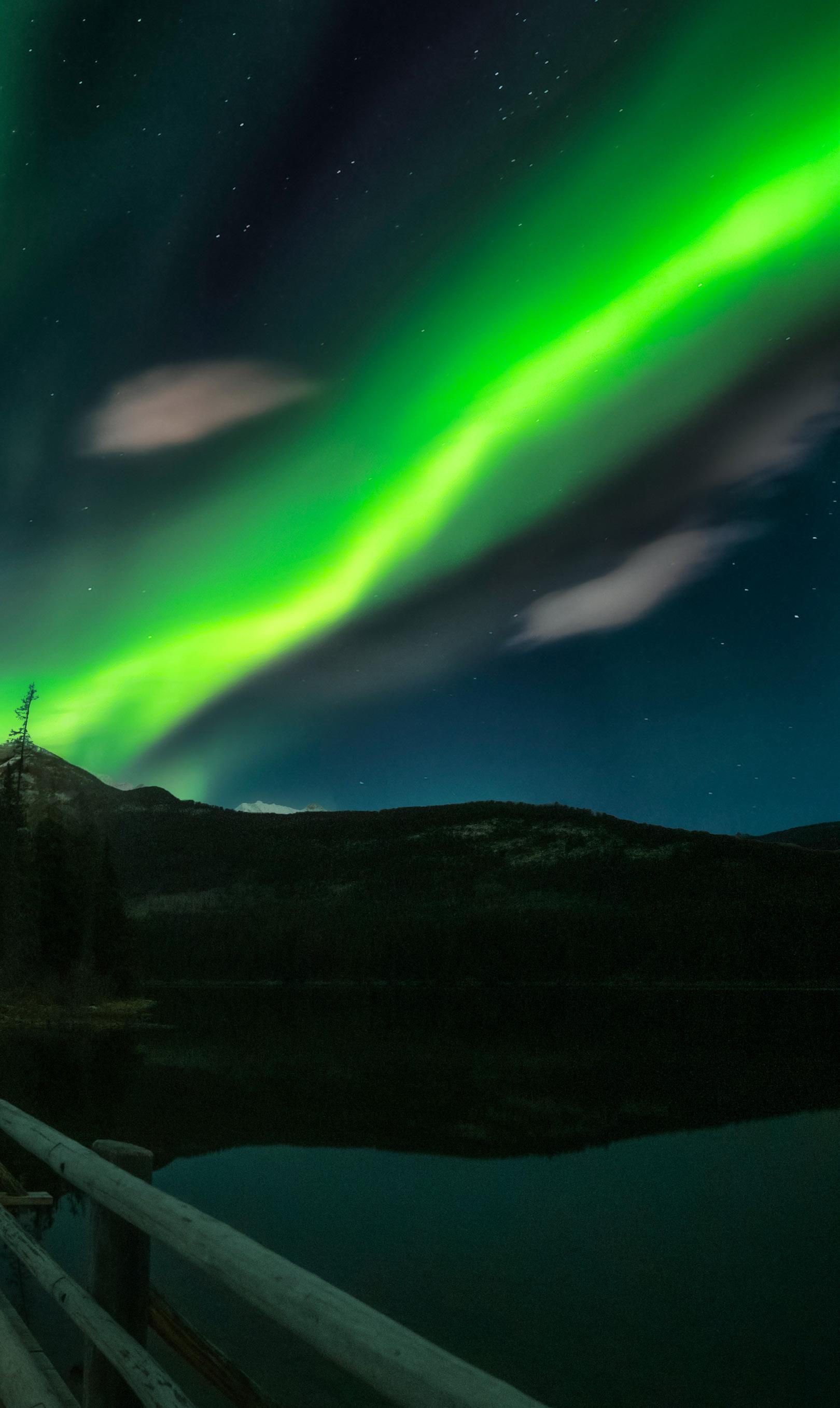
3 minute read
DARK SKY
MEMORIES OF JASPER'S DARK SKY PRESERVE
As host of the Jasper Dark Sky Festival, science journalist Niki Wilson has extensive knowledge about the protected skies above Jasper National Park. But she also grew up in Jasper. Here, she writes about what those stars mean to her. On a clear night in May 1990, I lay on my back in a clearing near the Athabasca River. Music wafted by in pieces, winding around the trees that separated me from the high school graduation party raging in the distance. It was around midnight. My best friend

lay beside me, shoulder touching mine. Above us, brilliant green aurora electrified the sky—great pulses of light fading in and out like erratic, celestial heartbeats. We didn’t speak. Soon we would leave each other for different cities, universities, and people we had
TIPS FOR SEEING THE AURORA BOREALIS
1. Jasper’s fall and winter have the longest hours of darkness. It’s a myth that it must be cold and/or late at night to see the aurora borealis – they’re just harder to see against a bright background. 2. Look to the northern corner of the horizon for the best chance of spotting the aurora borealis, which in Latin means morning light coming from the north.
3. Get real time updates on the likelihood of seeing northern lights with AuroraWatch— a website that monitors geomagnetic activity in the area and offers a free email alert service.
yet to meet. The future felt enormous and alluring and daunting. But for those moments, we could just lay together as memories of the past twelve years surfaced and mingled with the charge in the air. How lucky we were to grow up in a place dark enough for the night sky to reveal itself and to figure so prominently in our memories. Back then it would have been hard to imagine a world that would require dark sky preserves (like Jasper’s) to see the stars. But almost 30 years later, the Earth has become a place with fewer and fewer opportunities to connect with the wonders that twinkle above. It’s a loss not just to the countless species that rely on celestial cues and cycles to be well, but also to humanity. Beyond the growing evidence of impact on human health, our relationship with the universe is fostered largely by our ability to glimpse it through clear, dark skies, to tie memory to the stars.
Jasper has given me so many of those night sky memories: jumping off the dock for a moonlight swim at Lake Edith. Having a night picnic at the top of Old Fort Point and picking out constellations. Rappelling into a canyon by moonlight after making a critical error and getting myself lost on Mount Hawk. Playing night hockey on Pyramid Lake under the stars. Dancing to a fiddle player under the quarter moon at an old Parks Canada warden station on my 27th birthday.
In one of my favourites, along with two other families my husband, son and I lay sardine-style on the dock at Hidden Cove paddle camp on Maligne Lake. We are watching stars shoot across the sky as part of the Draconid meteor shower. They are so luminous they feel only an arms-length away. Feathers escape our down coats as we press ever closer to one another, buying time against the cold of early October. We leave only when the chill forces us to our tents.
The nineteenth century astronomer Maria Mitchell once said, “Mingle the starlight with your lives, and you won’t be fretted by trifles.” It certainly seems to work, and it’s a good reminder to me to ditch Netflix and get myself out for a quick night dip in the lake before it gets too cold. Maybe the mink that hangs around the dock will slink by, hunting under the cover of darkness. Maybe I’ll hear the hoot of the great-horned owl that nests just beyond the adjacent beach. Maybe I’ll see you there.










